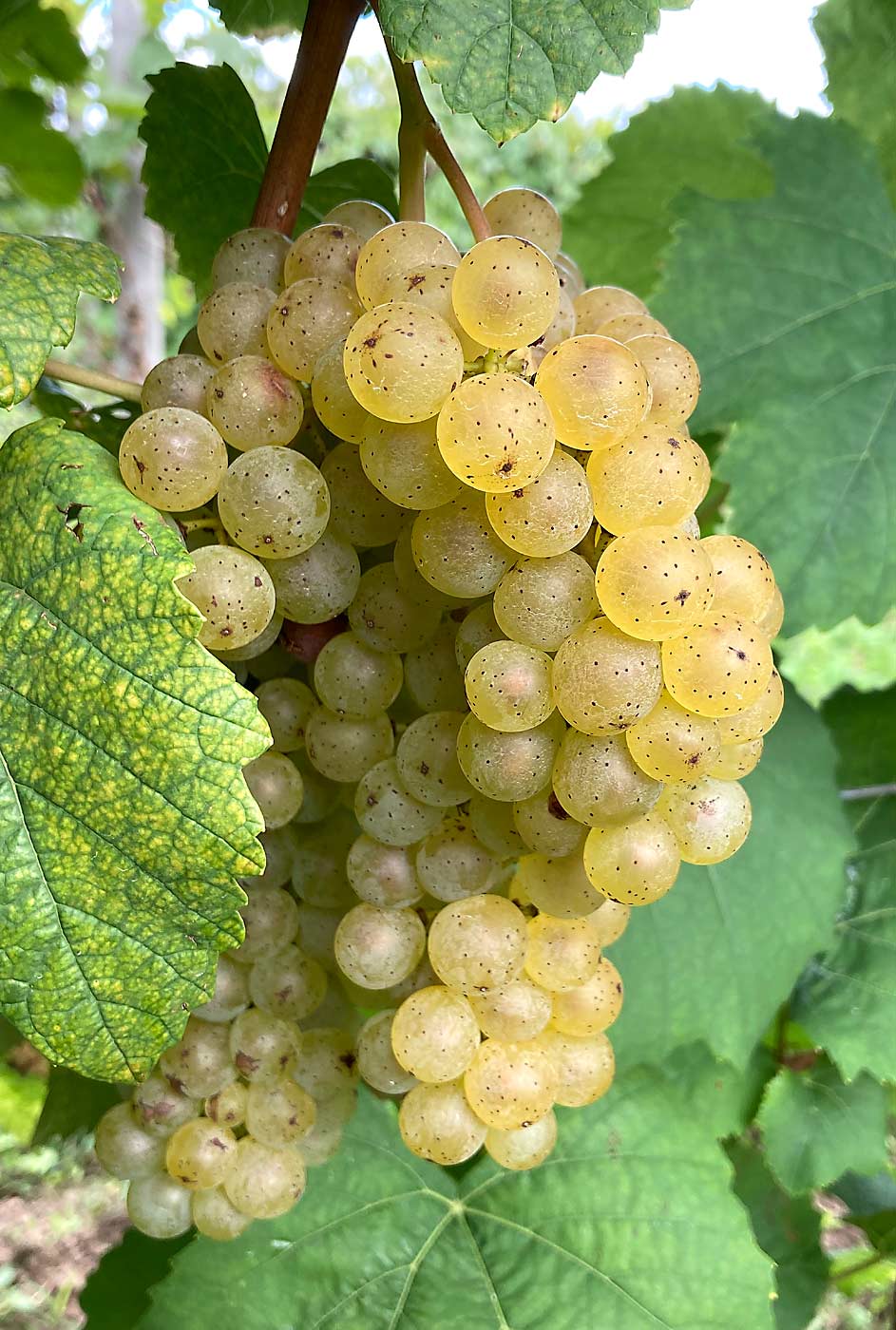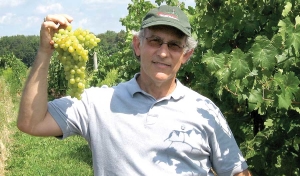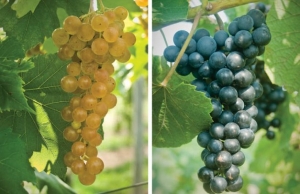
Cornell University has released Aravelle, a new white wine grape.
A cross between Cayuga White and Riesling, Aravelle might appeal to growers looking for a profitable wine grape that’s easy to grow and produces excellent wines, said Cornell grape breeder Bruce Reisch.
Two New York nurseries, Amberg Grapevines and Double A Vineyards, are currently distributing the grape, after years of growers and winemakers requesting its release. Reisch made the original cross in 1981. Known as New York 81 at the time, he provided vines for growers to test, then moved on to other things. NY 81 had great flavor, but it wasn’t a dramatic improvement over either of its parents.
Over time, however, growers testing NY 81 noticed it was highly resistant to botrytis bunch rot, much more so than Riesling.
So, Reisch and his collaborators took another look at the grape, conducting trials in multiple locations. They confirmed that Aravelle combines the disease resistance and productivity of Cayuga White (released by Cornell in 1972) with the taste qualities of Riesling.
When rot appears, growers often harvest Riesling grapes early, at suboptimal sugar levels. But Aravelle can be harvested at its optimal ripening time, even in wet years with a lot of rot. With its resistance to rot, as well as powdery and downy mildew, Aravelle can be managed with fewer sprays, thus saving growers money. Reisch said it’s also slightly more cold-hardy than Riesling.
Paul Brock, a grower and winemaker in New York’s Finger Lakes region, has been working with Aravelle for more than a decade. He first came across the grape when he was a professor at Finger Lakes Community College, where an NY 81 test plot was planted in 2012. He started blending NY 81 grapes in his own wine at Silver Thread Vineyard in 2019.
As a grower, Brock likes Aravelle for its disease resistance and adaptability to a high-wire trellis system, which makes it easier to manage.
“If it can tick those two boxes, it’s already a pretty good grape,” he said. “It’s a good-looking grape, too.”
As a winemaker, Brock likes Aravelle’s fruity intensity and versatility: It blends well with different styles of wine.
Brock planted his winery’s first plot of Aravelle last year. He expects a small crop from the half-acre plot this year and a full crop by 2026. His customers aren’t familiar with the name “Aravelle,” because the grape is so new, but they already love its flavor.
“We’re growing Aravelle because it makes a nice wine,” Brock said. “That’s the best reason to grow a grape.”
While introducing wine grapes can be a challenge, the most recent Cornell wine grape releases, Aromella and Arandell, have gained a meaningful footprint since they were released in 2013.
Aromella, a white variety, has now been planted in more than 100 acres, and its wine production is worth over $8 million annually. Growers say it’s productive and makes excellent wine, Reisch said.
Arandell, a red variety with high disease resistance and an upright growth habit, has been planted in more than 55 acres, and its wine production is worth over $5.5 million annually, he said.
—by Matt Milkovich








Leave A Comment